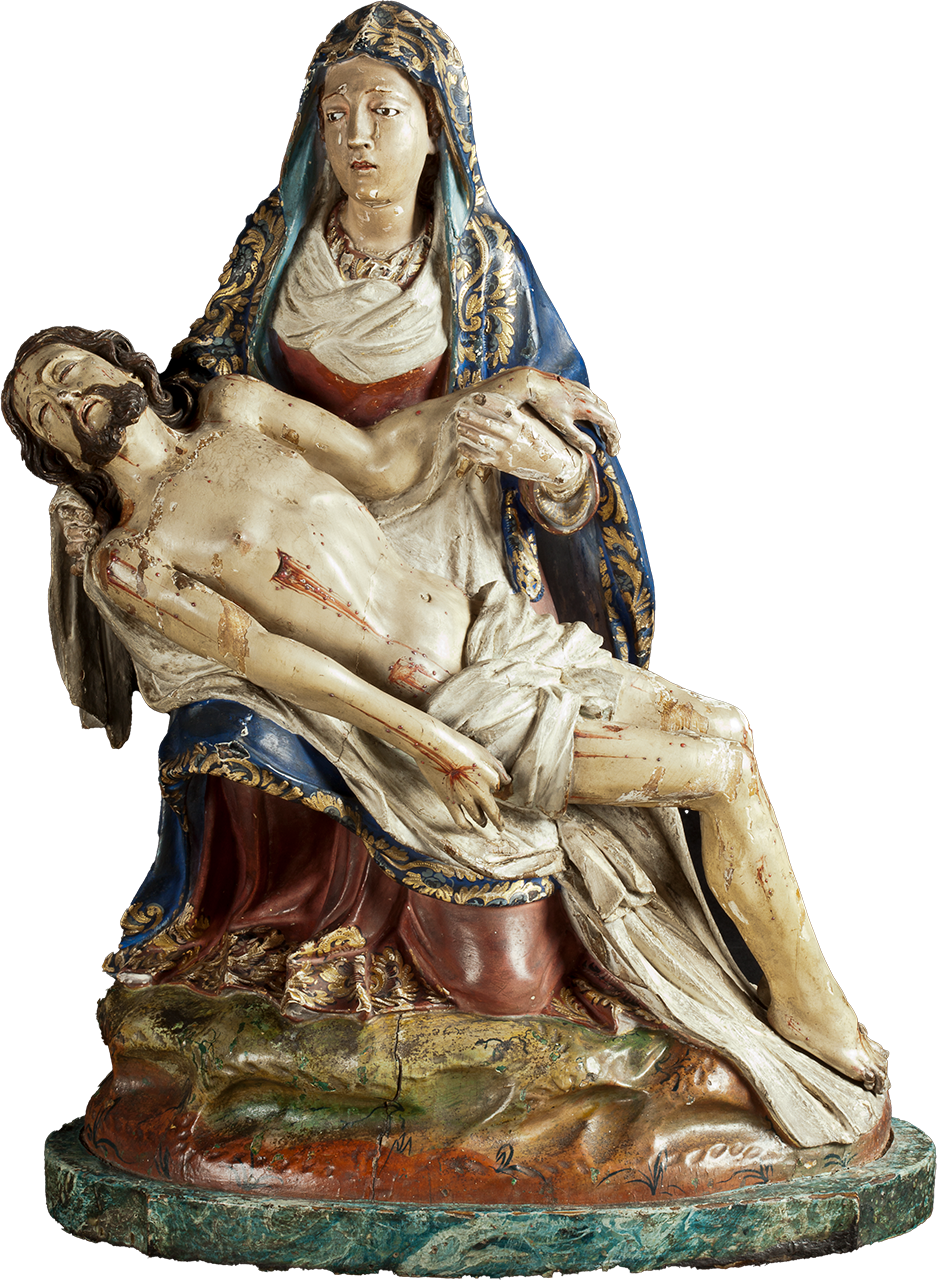
Pietà
In contrast to representations of the Lamentation, which depict the body of the crucified Christ surrounded by a chorus of mourners, the Pietà advances a simpler and more direct expression of grief. Set in a decontextualized environment, devoid of references to the cross or the paraphernalia of crucifixion, it explores a moment of heightened psychological intensity, depicting the Virgin cradling her now dead son in her arms as if he were somehow still an infant. The sculpture in this sense functions almost like a type of hologram, collapsing the dialectical clarity of the boundaries between infant/adult, living/dead, and nursemaid/mourner. It succeeds as a result in inviting expressions of affective empathic identification, enjoining audiences to experience and thereby revivify the instinctive, boundless, and never-ending love of a mother for her child.
Dressed in a crimson robe surmounted by a blue mantle with an elaborate floral design, the Virgin stares outwards into space as if lost in thought. Although she would have been much older at the time of Christ’s death, the artist has portrayed her as a young woman in order to emphasize her incorruptible purity. While her blue mantle symbolizes her modesty, her crimson robe signifies her love, passion, and devotion to Christ, its colour complementing the blood on his body and in this way exuding a certain eucharistic quality. As was common at the time, the artist has given her a more life-like, human appearance by using glass both for her eyes and for the teardrops streaming down her face. Conversely, the embroidered borders of her mantle have been produced using the estofado technique, which involves covering the garment in gold leaf, painting it over with a darker colour, and then incising it in intricate patterns so as to reveal the gold underneath.
Christ, in contrast, is depicted in a more austerely brutalized light. His body, pale and lifeless, appears naked with the exception of a simple white loincloth, while his face, which is angled outwards towards the viewer, reveals the horrifying physical signs of his ordeal. Of particular note is the prominence afforded to the wound in his side, which, by forming a contrast with the pale tones of his body, once again highlights the importance of communion. As is the case with the treatment of the Virgin, Christ’s hair, teeth, and skin are rendered in a convincingly naturalistic style typical of Spanish polychrome sculpture of the time.
The sculpture is part of a collection of artworks from the English College in Lisbon, which was transferred to Ushaw College in 1973. Little is known about its origin or function, but it is likely to have been displayed in a prominent position where it would inevitably have served as a catalyst to devotion.
 Click to zoom and pan
Click to zoom and pan
...
Your feedback is very important to us. Would you like to tell us why?
We will never display your feedback on site - this information is used for research purposes.
Artwork Details
Title
Pietà.
Artist
Unknown artist (Unknown).
Date
Seventeenth century.
Medium and Support
Painted wood, gold relief, gilding, and glass.
Dimensions
67 cm (height).
Marks and Inscriptions
None.
Acquisition Details
Ushaw College inherited the sculpture in 1973, after the closure of Lisbon College.
Previous Owners
Unknown.
Institution
Ushaw Historic House, Chapels & Gardens (previously known as Ushaw College).
Bibliography
Stefano Cracolici & Claire Marsland, ‘Spanish Art at Ushaw College’, in Spanish Art in County Durham, ed. Clare Baron & Andy Beresford (Bishop Auckland: Bishop Auckland Trust, The Bowes Museum, & Durham University, 2014), pp. 124–25.
